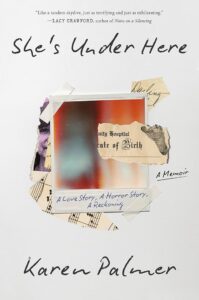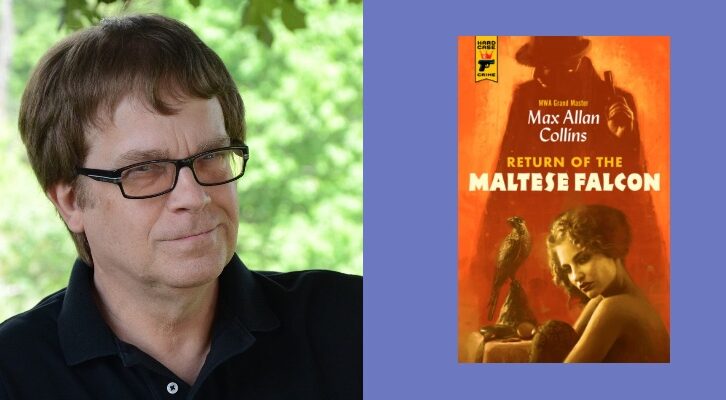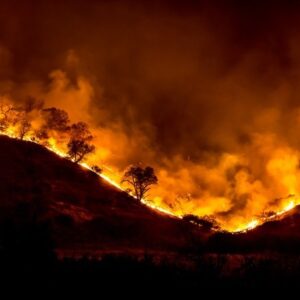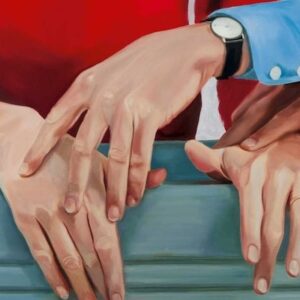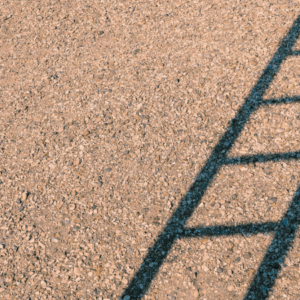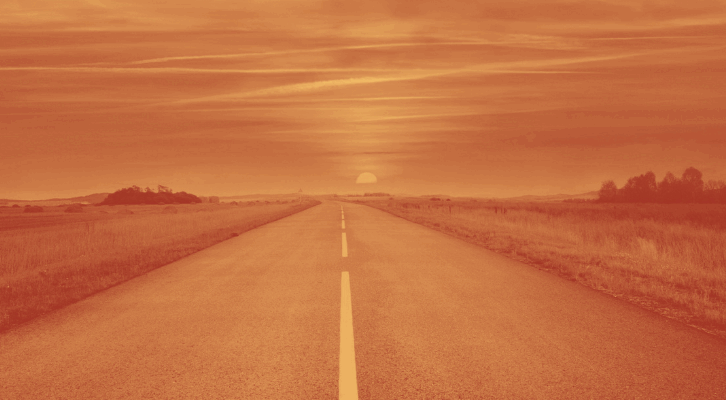
Karen Palmer on Writing in Motion
“A car is a contained world with ever-shifting vistas.”
This first appeared in Lit Hub’s Craft of Writing newsletter—sign up here.
I took a road trip recently, a 2,500-mile roundtrip drive between Los Angeles and Grand Lake, Colorado, where I was due to spend a week teaching at Lighthouse Writers’ annual retreat.
Yet my own writing was stuck. I’d estranged myself from a promising novel-in-progress. Since the 2024 election, the news had become relentless, daily cruelties laid out so matter-of-factly that creativity seemed frivolous, even pointless. My concentration was shot; the simple pleasure of stringing sentences into interesting paragraphs felt beyond me.
Traveling east from LA, I drove into the sunrise. I didn’t listen to the news, as I usually did. The silence was a relief. After turning north onto I-15, I stopped at a McDonald’s for coffee and a Sausage McMuffin. I brought my notebook inside, but I didn’t open it. Instead, I watched a toddler gleefully spill first his soda, then his mom’s. I envied his mastery of the environment. Back on the road, the sun climbed. The desert spread all around. I relaxed a little more. A couple of hours in (only twelve more to go!) I approached Barstow. Ahead, two nondescript bridges spanned the highway.
The bridges reminded me of a remedy for insomnia a therapist had once suggested: Imagine you are flying over a river, arms out, Superman-style. You follow the river’s twists and turns while a bridge grows ever closer. At the last second you swoop down and pass beneath it, abandoning consciousness on the way.
I slipped under Barstow’s bridges at 85 mph, and I shifted into a slightly altered state, one in which a fix for an essay I’d been working on for weeks presented itself. I thought about pulling over and making notes—memory being a trickster these days—but decided not to. I said the words aloud. Repetition melded with the hum of the car’s engine, while mile after mile monochromatic scenery rolled past. By the time I reached Richfield, Utah, the journey’s halfway point, and checked into a motel, I’d “written” the better part of a novel chapter. I spent the evening hours getting everything down. Sentences begat more sentences. It felt like taking dictation. Which, in a way, it was.
The next day took me through Utah and into Colorado. I thought more about the novel, composing dialogue, acting out the characters’ parts, poking at their passions, their conflicts, their misapprehensions, discovering what was hidden in their words, what revealed. Outside, the temperature hovered at around a hundred degrees. The sky looked enormous, so blue it hurt, clouds drifting like blowsy white flowers tossed into a lazy river. I entered the Rocky Mountains. I was now surrounded by sheer-sided peaks and hillsides thick with pine. Over and over, the road climbed and descended. All of this felt magically conducive to making art. I arrived in Grand Lake flush with success, sure I’d discovered the secret to eternal life.
What happened to me, though, is neither a mystery nor, despite my sense of discovery, all that original. In 1938, Brenda Ueland’s “If You Want to Write: A Book about Life, Independence and Spirit” advised writers to “Go into your room alone and … perhaps write down and name what colors you see in the sky with quiet dreamy attention. Don’t bother to make sentences unless you want to.” Robert Olen Butler, in From Where You Dream, suggested that the answer to the eternal pantser-versus-plotter dilemma is a hybrid method wherein the writer sits for days or months daydreaming their way into a story, jotting down on index cards only a few words of action and some sensory detail, and then, finally, ordering them organically. These techniques, like my dive under Barstow’s bridges, are a form of meditation, or self-hypnosis, a way to bypass the censor that lives inside every writer, criticizing and thwarting the projects we hold dear.
The difference is that composing while in motion may be a particularly useful way to address a crisis in creativity.
Ideas flow when the body is occupied but the mind is unbound. At the desk, the phone is too often near; the screen issues its siren’s call. A car on the other hand is a contained world with ever-shifting vistas. Landscape functions as a mood board, terrain shaping tone; the rhythm of the road informs inner narrative. Here, you occupy a liminal state between destinations and between identities. Dr. Shelley Carson, author of Your Creative Brain, writes: “When you’re driving down a clear road for a long period of time, you go to an automatic state [and] Ideas that ordinarily would be filtered out collide.”
Fearing that you might forget what you’ve created, you can always record it all on your phone, but what happens if you defer writing things down? Acknowledging the possibility of memory’s failure in fact demonstrates faith in memory. You narrate the story, repeating words and phrases, testing their sense and musicality. You think about voice: Who are you? Who are you talking to? Yourself? A passenger? A future reader? Later, mental composition will become written language. Some things are forgotten, others refined. Memory, it turns out, is an excellent editor: what remains is what matters most. Novelist Lauren Groff writes all her first drafts longhand, then redrafts without consulting those early pages, trusting that her subconscious knows what’s important.
The most famous book composed while traveling is Jack Kerouac’s On the Road, typed on a continuous scroll over three weeks of travel across the U.S. Rainer Maria Rilke wrote much of his Letters to a Young Poet while in transit, constant movement shaping his philosophical tone. Rebecca Solnit keeps notebooks while journeying by train or plane. Ocean Vuong has said that trains and planes have helped him refine and “breathe” into his sentences.
It’s impractical to take a road trip every time you get stuck. It can be impossible, or even—given the environmental toll of driving—unethical. But I was undeniably stuck. And I had to get to Colorado somehow. I might have flown or taken a bus or a train, and working while doing so might have been productive, the mind busy with making while moving at speed. Having chosen to drive, however, I could savor solitude while the world showed itself out, the open road as much method as metaphor. I cannot recommend it enough.
______________________________________
She’s Under Here by Karen Palmer is available via Algonquin Books.
Karen Palmer
Karen Palmer is a Pushcart Prize winner and has received grants from the NEA and Colorado Council on the Arts. She's Under Here grew out of her award-winning essay “The Reader Is the Protagonist,” first published in Virginia Quarterly Review and selected by Leslie Jamison for inclusion in Best American Essays 2017. More recently her short story “Birds of Paradise” won the 2022 Emily Clark Balch Prize for Fiction. Her writing has appeared in The Rumpus, The Kenyon Review, Arts & Letters, and Kalliope, among others. She lives in Los Angeles.









